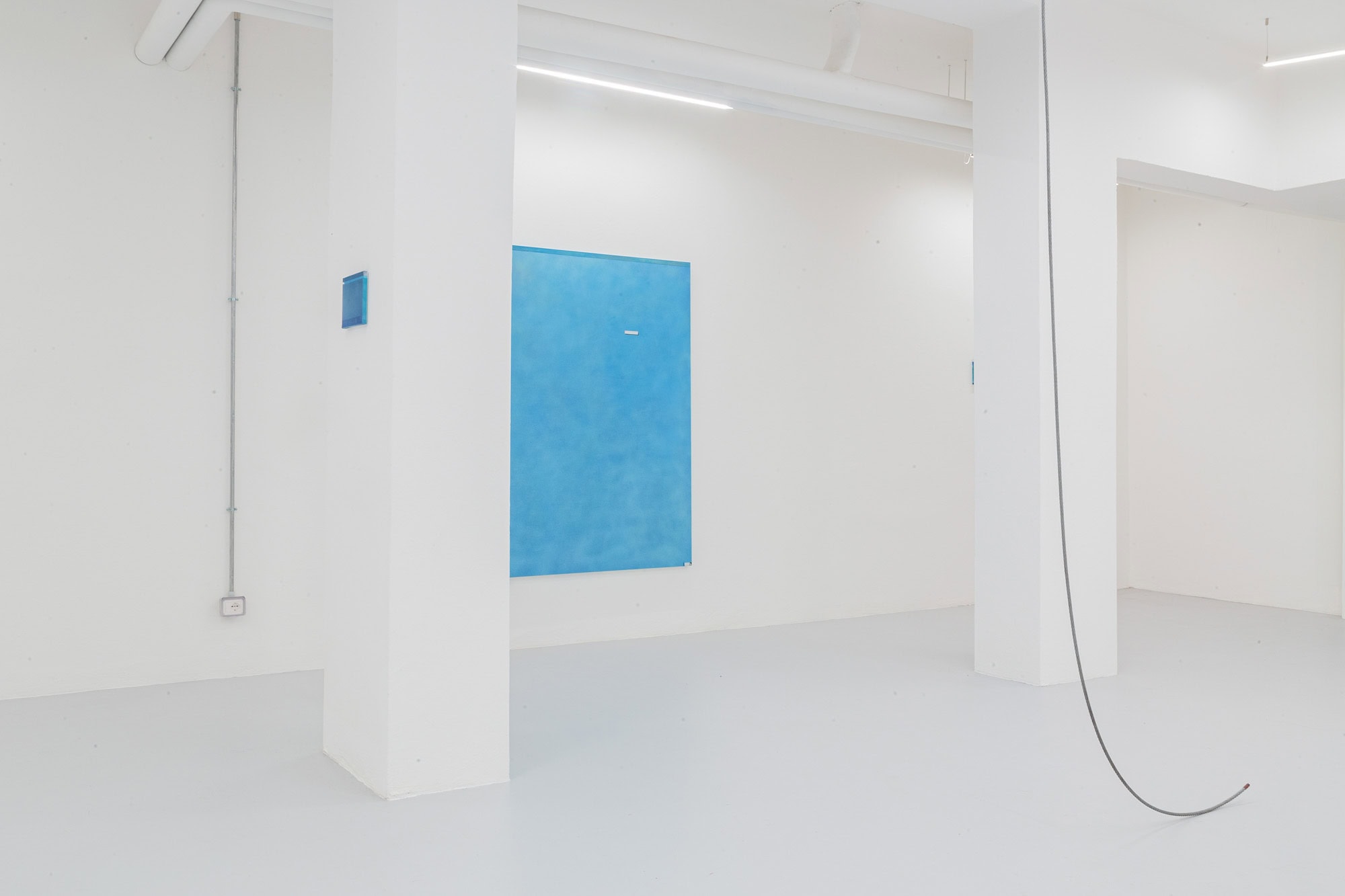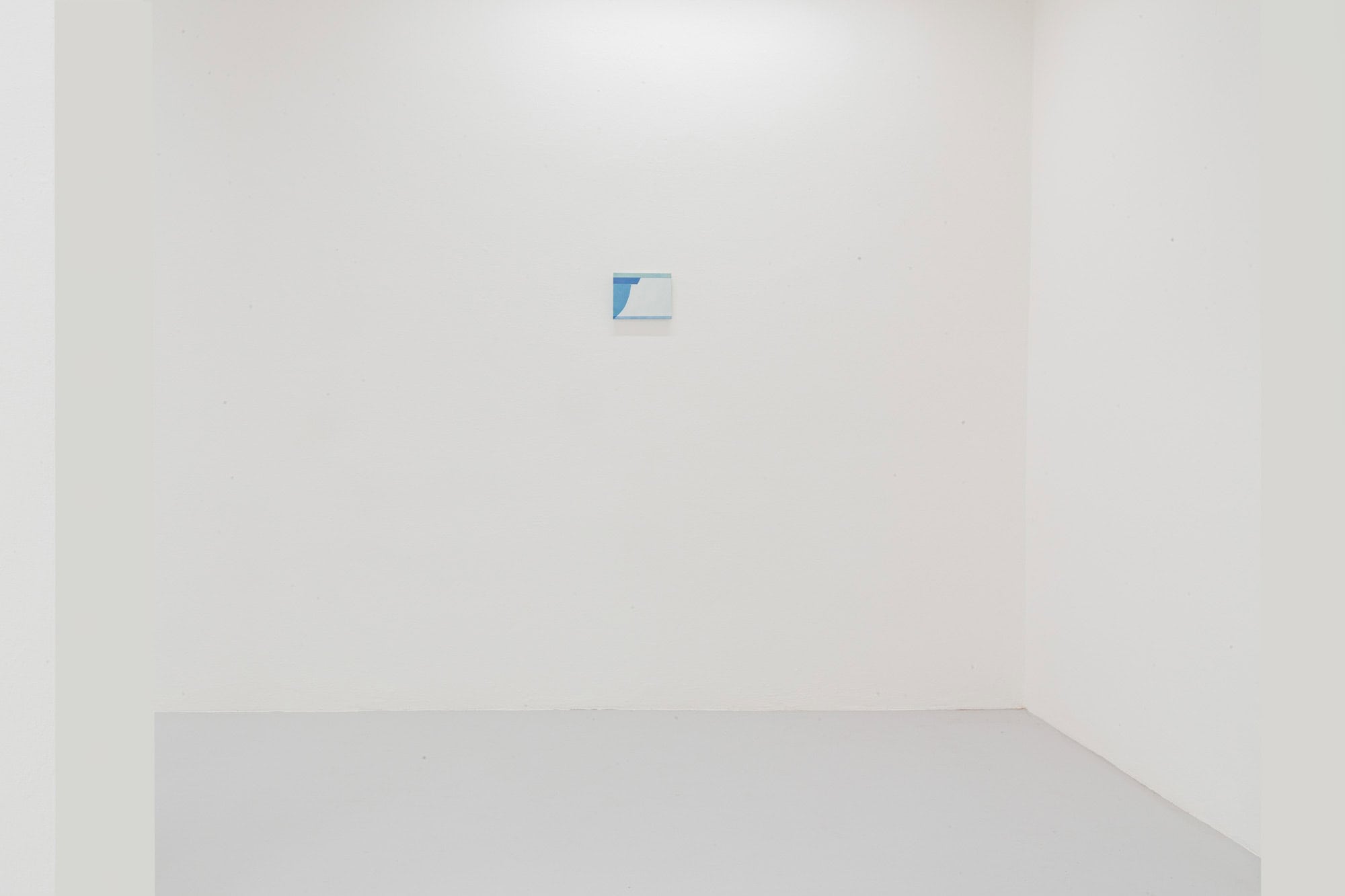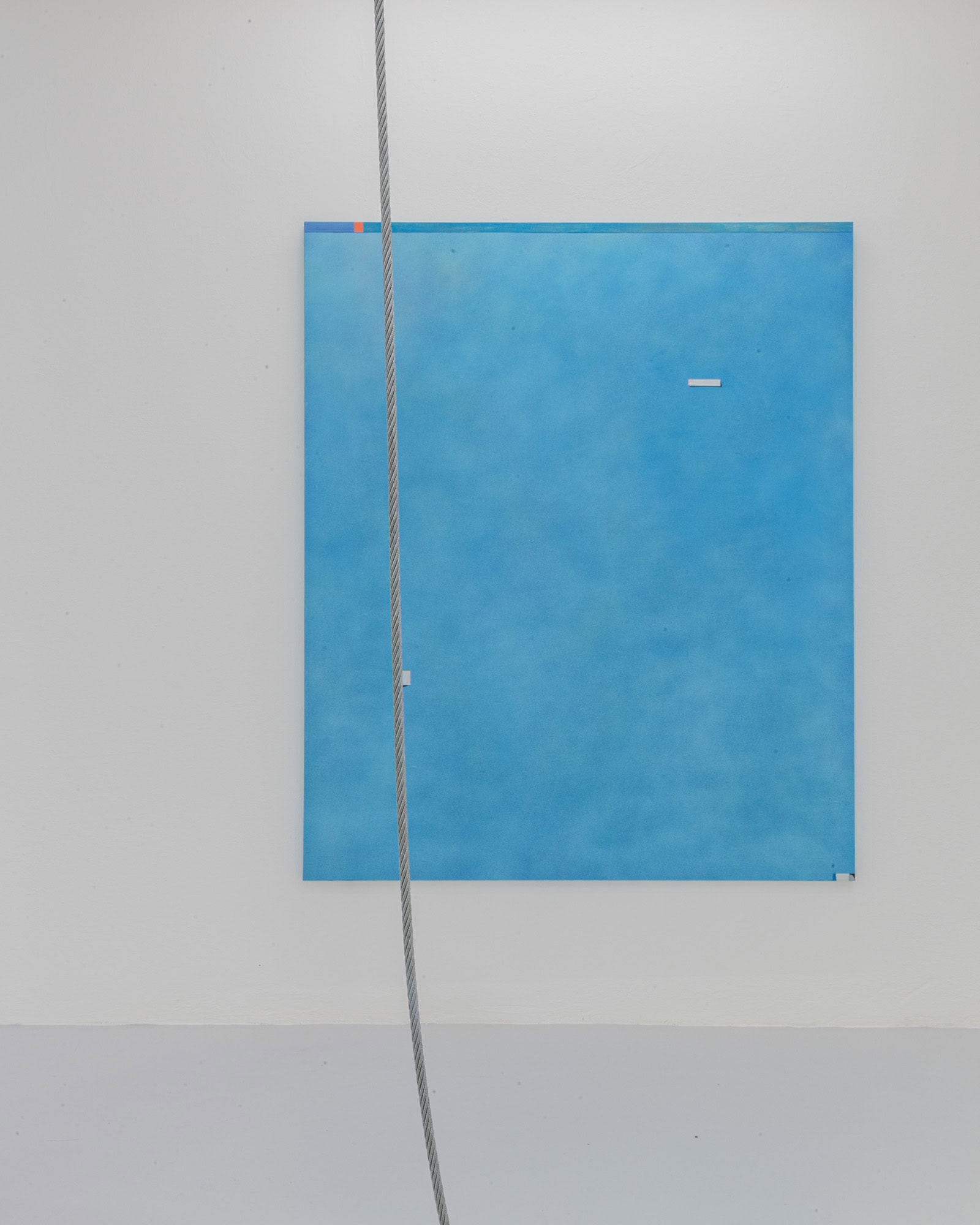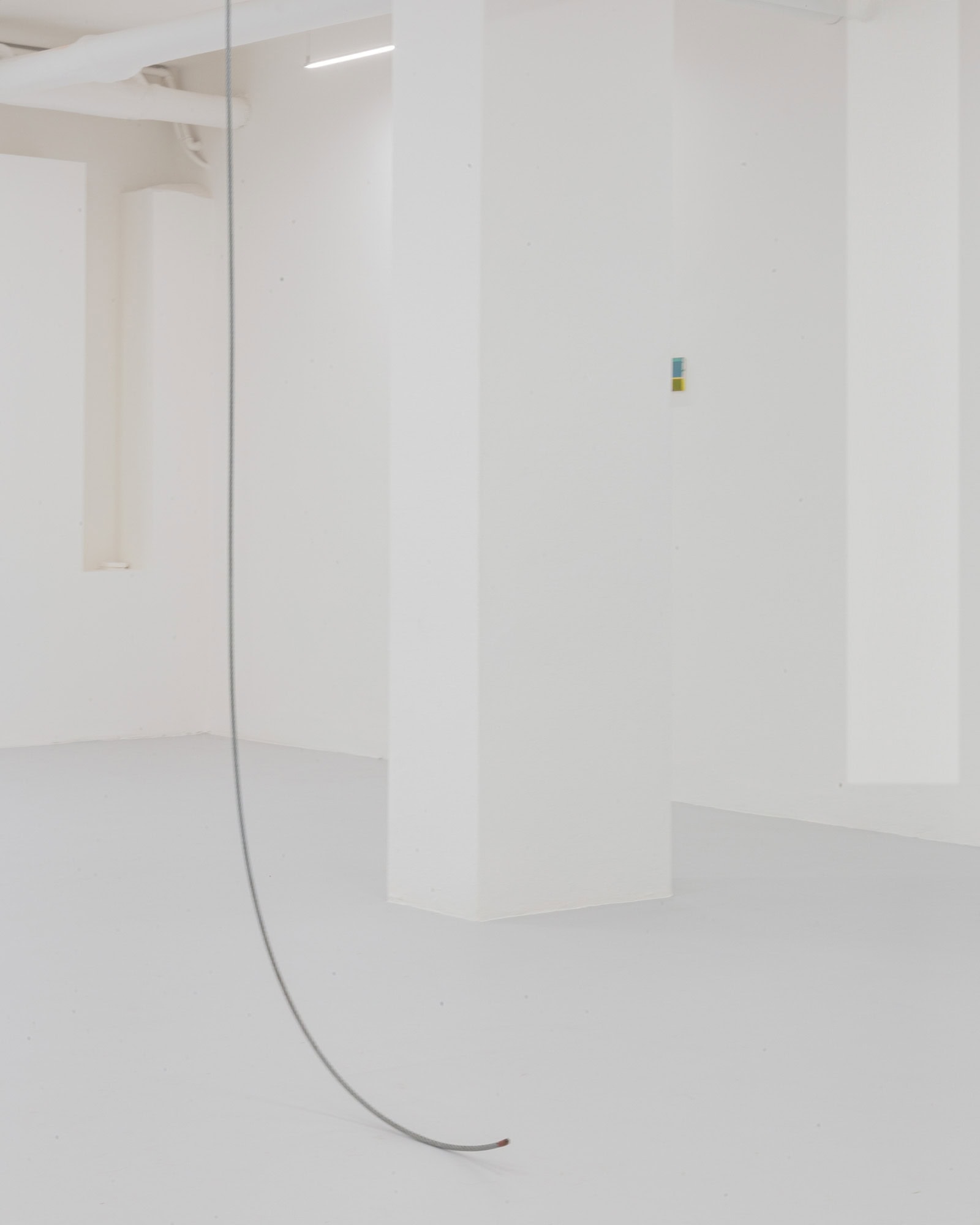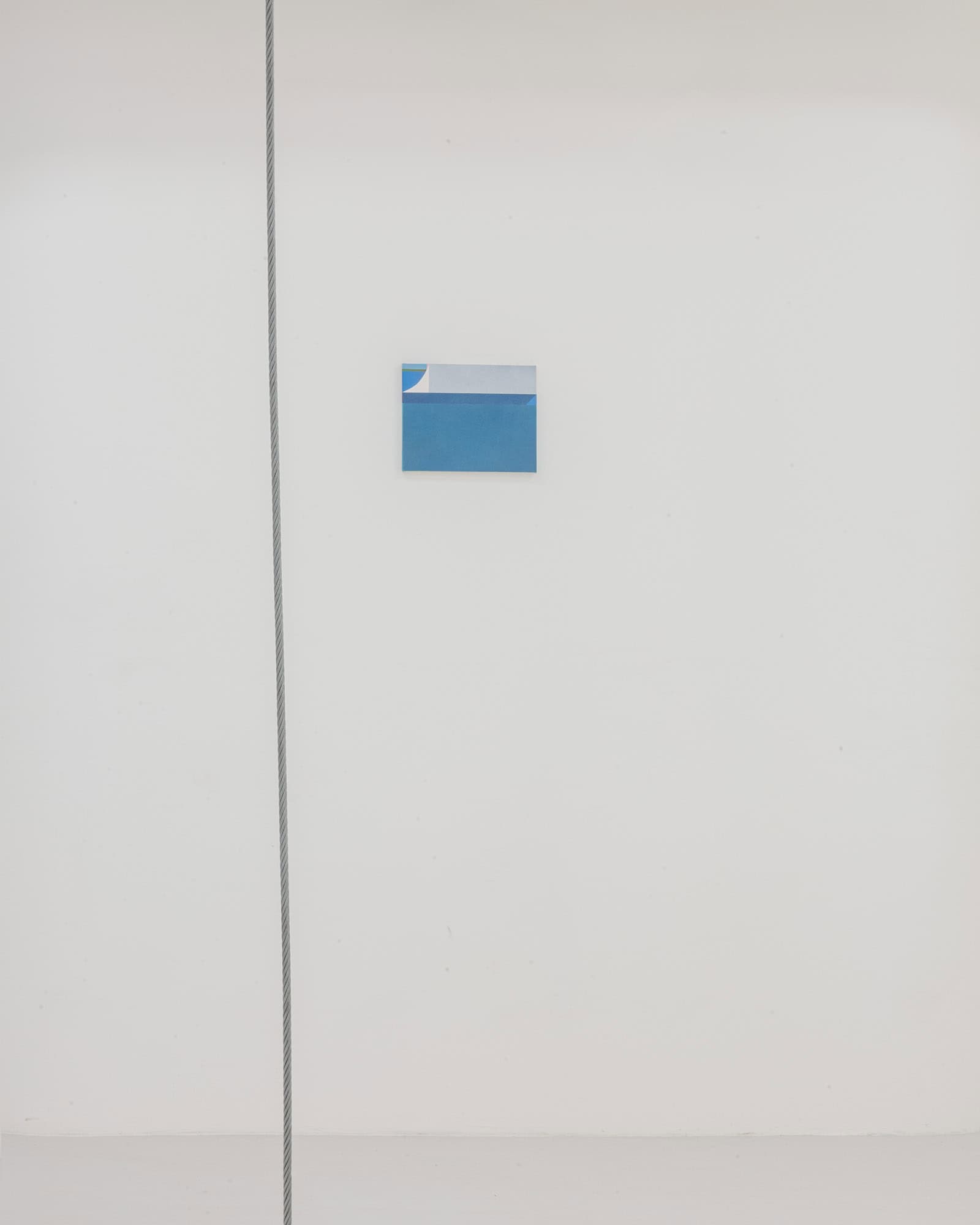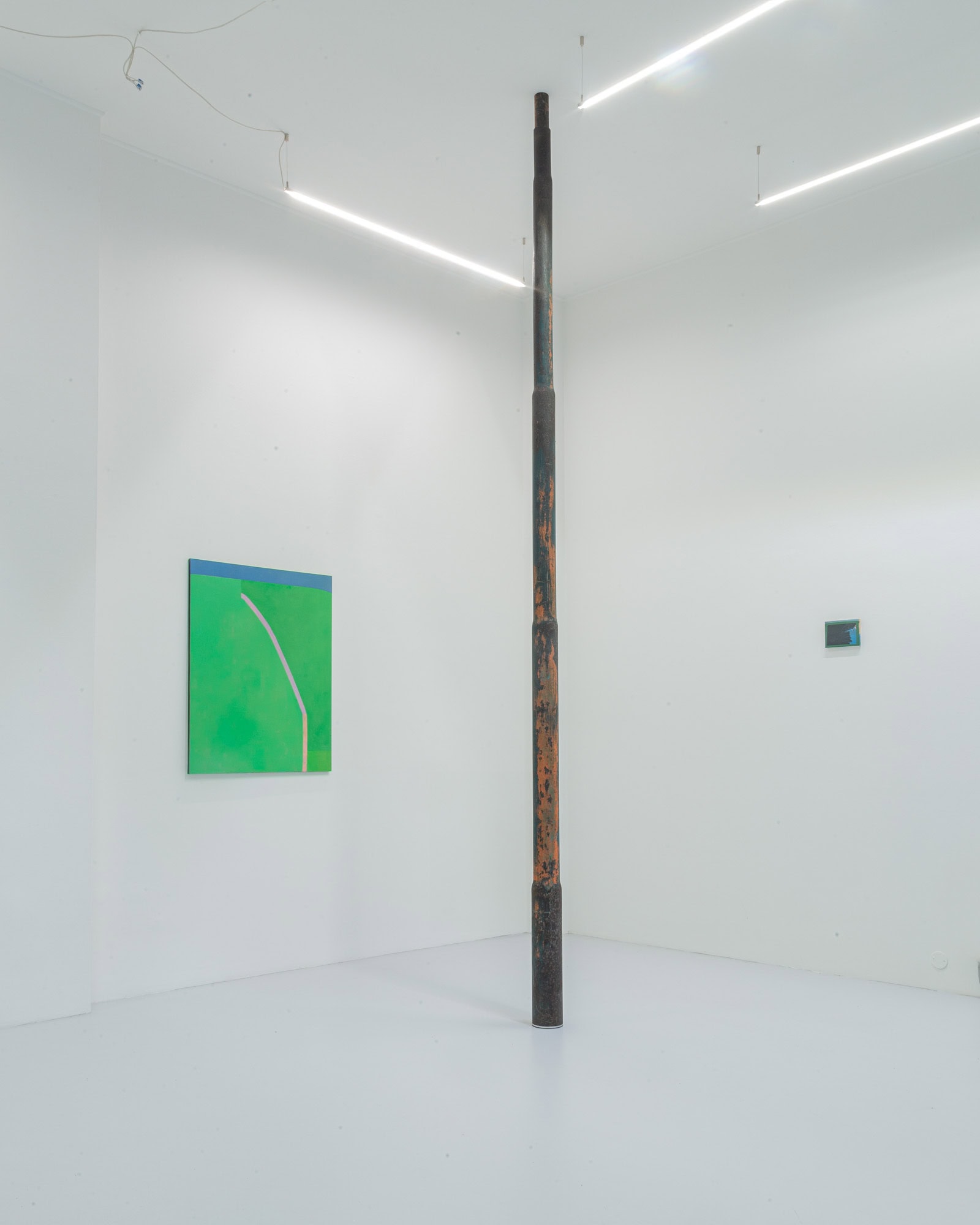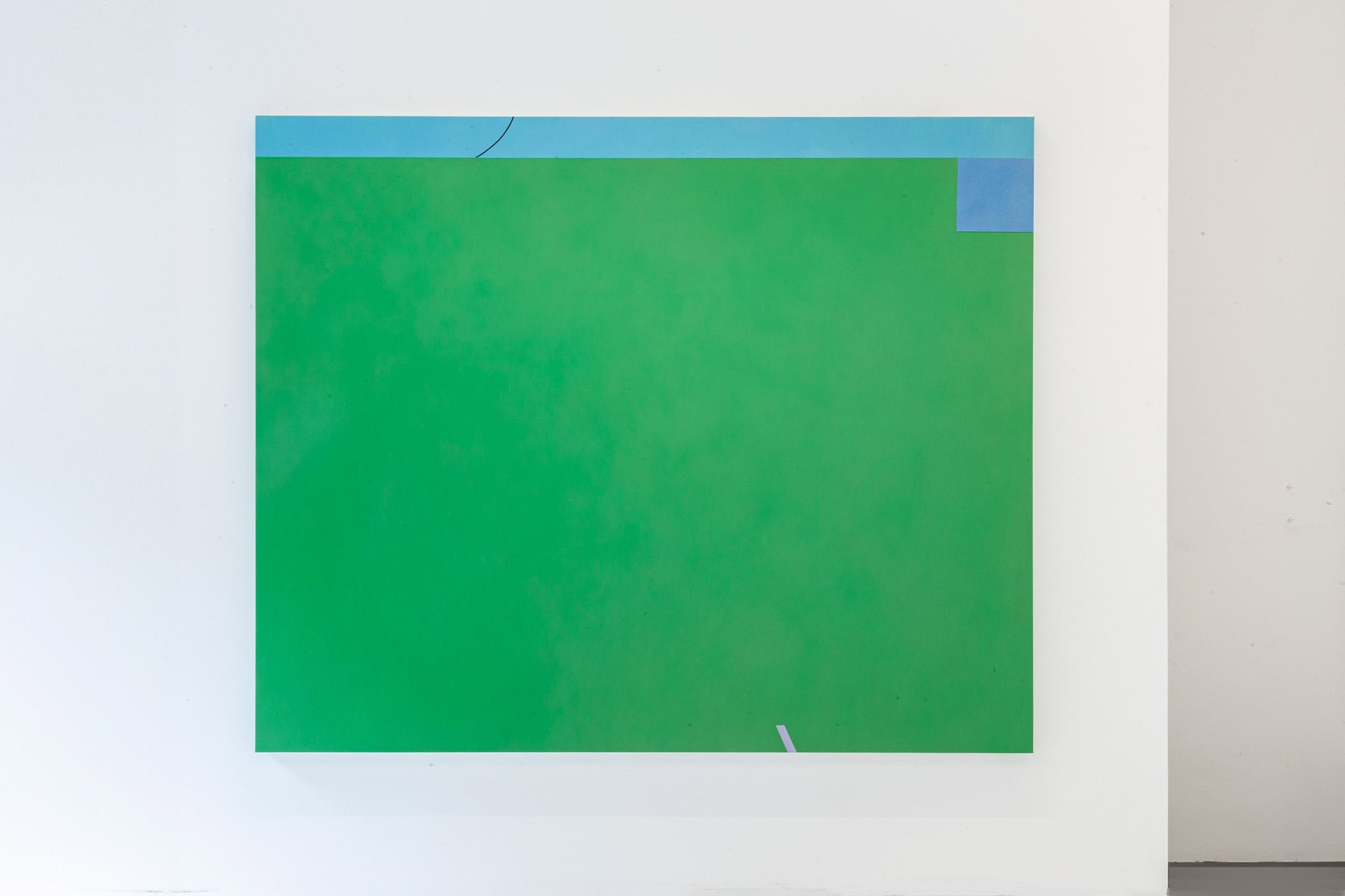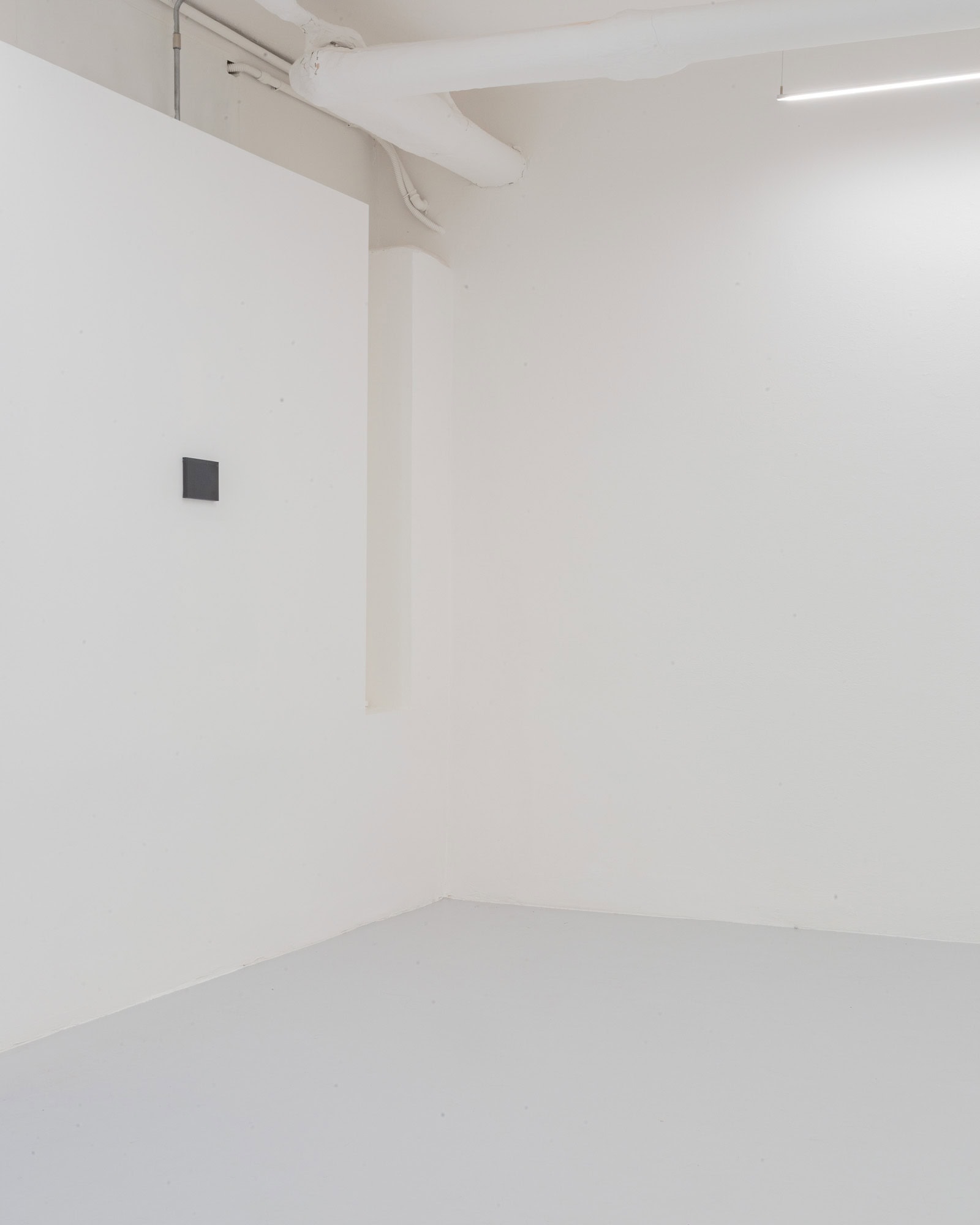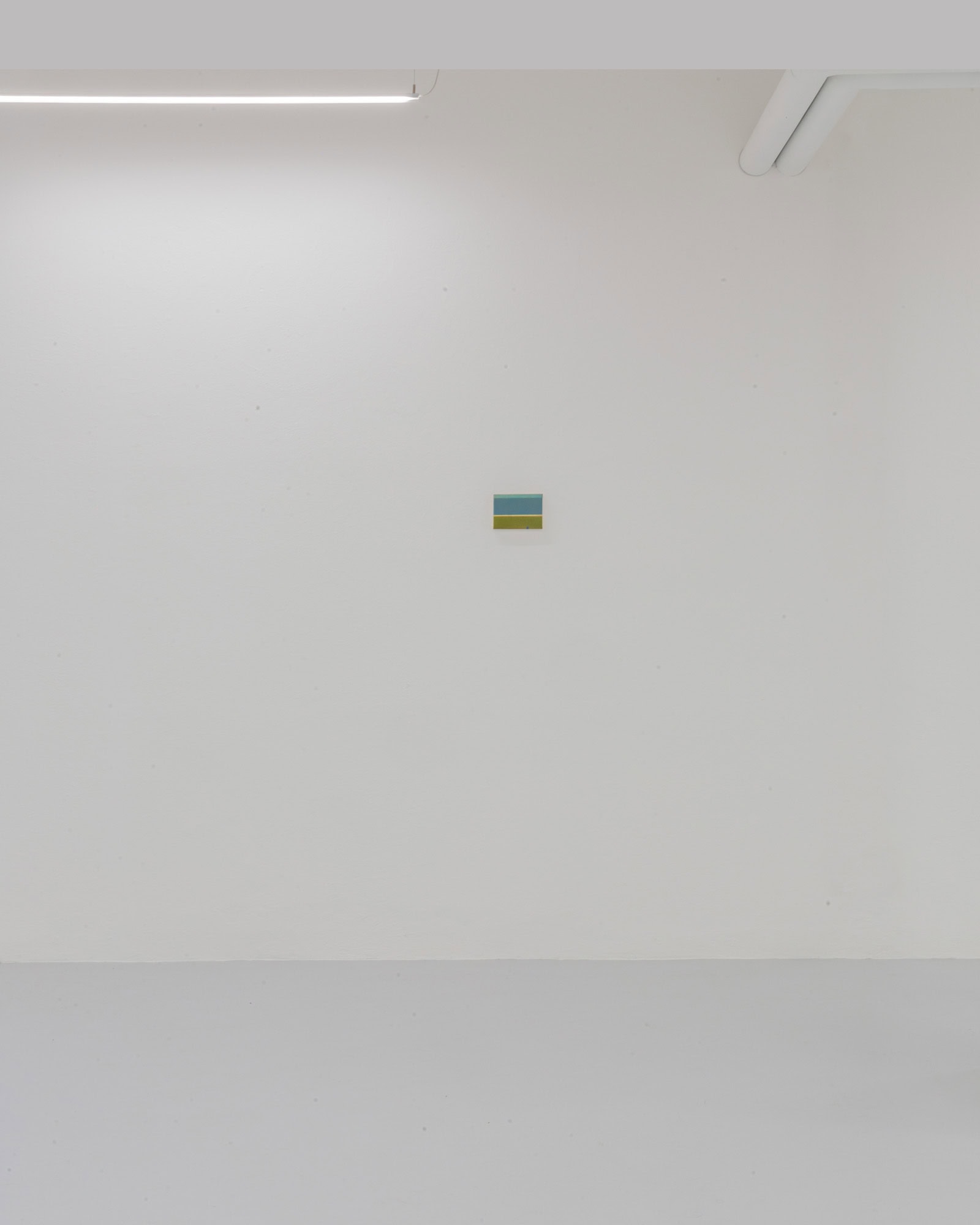Mario Silva is a London-born and Milan-based artist. Until April 20th, 2024 he’s presenting his solo show Unaline at banquet, Giangiacomo Cirla’s contemporary art gallery dedicated to the promotion and growth of established and emerging artists. Unaline expresses not only the artist’s interest in abstract movements lingering in a threshold between real and virtual spaces. Following his quest toward the surreal, Silva tends to invade the exhibition space, evolving his pictorial language into actual installations where space reverberates the pigments’ energy and physical nature. Contrasting colours communicate silently building up a poetic of lines and logics of elements transpositions through bidimensional spaces.
Ilaria Sponda: Your work draws heavily on your personal cartographies of places. For example, you move between virtual and physical places to create your paintings, although abstract. How do you distinguish between virtual and real, personal and public in your work and art?
Mario Silva: I feel that my work does indeed express movement happening within spaces and objects. A form of dynamism that I am subject to when wandering about in my personal mindscapes, or cartographies as you may call them. These places are of surrealistic essence and combine a variety of components that are derived both from reality and from the vast and heuristic world brought to us by our digital interface. Abstraction itself comes as a consequence of a chosen point of view. For instance; the observed subjects are taken from real-life experience but are then depersonalised and simplified by the decision to observe them from a “virtual” and zenithal angle. This allows these given objects to break free from their significance and embrace openness but still requires the painter to describe them as they are, keeping in mind their features. I would say that virtual and real are very connected to each other in my work. Reality is used as a term of comparison that gives identity to the things that can be found within my paintings, it is a reference. The virtual aspects instead, have a stronger potential to them, due to the immense possibilities that are embodied by the server and its settings. I would say that my research has a lot more to do with the private sphere. Silence and a more solitary experience, rather than an outreach to the public sphere.
IS: Could you expand a bit on the work you’re exhibiting at banquet gallery? What felt important to translate from yourself to Unaline while you were creating the series? Is there anything you learned or realised about your practice in the process?
MS: I think I need to take a step back to answer this question. After my BLKPNTS series, I felt I had understood what black itself, as a color, had done to my process: I had just discovered my newest attraction toward silence and emptiness. What was a tree, had become only a few dots of light in the dark and I felt I had grown out of painting leaves. I also realised I had no longer interested in paying attention to the subject, but instead to its surroundings. From that moment I started my journey within an imagery that was made of vast fields painted with a seemingly artificial green. Wide angles and zenithal perspectives became the real focus of my research, while instead all of the objects became worthy only in terms of compositive matters. Later on, when Giangiacomo Cirla came to my studio and allowed me to make a solo show at his newest venue banquet, I felt the need to disclose something more personal and to restore the subject’s relevance as active content of the scenery. I had the chance not only to describe a specific place of my emotional belonging but also to paint a variety of compositive solutions concerning the chosen setting and the ways it dialogues with the objects within it. I decided to work on an exhibition that focused on the places I experience day-by-day, specifically the lake I am often at when I practice sports. I chose to describe the movement that both my life and my painting research are subject to while happening. Besides all of the content-related plot twists I encountered, what now feels important is that this decision led to the discovery of an intriguing way to use spray cans and enamel, which is something that entered directly into my process and is now of everyday usage.
IS: What’s your obsession with lines?
MS: I am intrigued with decontextualising concepts and observing how these can serve (stand for/ live) another significance and purpose once they are placed within another setting with different features and possibilities. The term itself is derived from the world of extreme sports, which I practice daily. Some time ago I was speaking with a friend and trainer of mine when I realised that concepts like “line” and “run” when unraveled and explained, have many connections with the world of expression and its output in front of an observer. A line is a series of technical executions that happen within a space; obsessively, repetitively, and often going in circles. A line is also a composition and it takes a specified subject/object into consideration during its preparation, execution, observation, and remembrance. A line is a segment, a portion of space extended between at least two points (A-B). It can be approached in many ways; A-B, B-A, A(right)-B(right), A(left)-B(left), A(right)-B(left), A(left)-B(right), and so on all of the other combinations that describe the movement from one side to the other of the features, or from one direction to another. It considers obstacles but can also ignore them and happen “on flat”, which is how the free space that can be used before, between, and after the impediment is called. When speaking with my friend and colleague Andrea Rizzo I was explaining how I had been calling diptychs and triptychs “lines” because I was enjoying the way my paintings were creating movement once put in sequence. He advised me to go more into the concept and expand it to the whole exhibition, which I then did.
IS: What’s the difference between a creative line and a technical line?
MS: A creative line focuses primarily on using the segment in an atypical way. It shows observation before execution. It contains spontaneity and is open to sketchy/gestural maneuvers. It usually chooses to combine mid-range technicalities which are implemented more by the creative attitude through which they were executed, rather than by the difficulty of the technicality itself. A technical line is instead a segment in which quantity is replaced by high standard. It’s a composition that is less repeatable due to its difficulty and has within its metric the concept that precision prevails overabundance. It is a specific and efficient maneuver, often expressed alone within a space of emptiness and balance.
IS: Do you see Google Maps as a potential medium for nurturing your artistic vision?
MS: Absolutely, I think Google Maps embodies a world of possibilities. I would not call them ‘new’ possibilities, due to their tight connection with the already existing “real world”, but I think the algorithmic world has a number of interesting aspects surrounding its visual vocabulary and descriptive language. For instance, once I was on my iPad using the server and wandering above the Persian Gulf when I encountered a gigantic black square. I started zooming in to get a glance at what this shape was describing and I found myself looking at a perfect line that divided the sea into two perfectly saturated colours: black and blue. I realised that Google Maps has a visual language that approximates every unevenness into lines and simplified geometrical forms, and it does so to describe things such as altitudes or, as in this case, water depths. I found a triggering and stimulating input in these particularities and have had a strong experimental drive toward finding more of these topics of observation.
